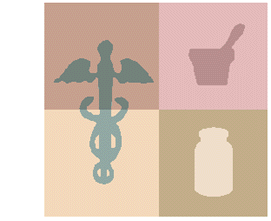Medical Supply Industry Structure

Large supply chain operations in any industry tend to ignore and eliminate innovative new ideas that add costs, specialized capability and complications to the supply structure. This tends to be the case in the medical supply chain as well. Professor Christensen has documented in his best selling book, The Innovator’s Dilemma, how economies of scale and risk aversion inhibit the innovation process preventing new ideas from making it to the market in the name of efficiency and market size.
The channels to the market for medical products consist of six basic types:
1) Large medical technology leaders who participate in high performance products and commodities such as Abbott, Baxter, BD, Medtronic, J&J, etc.
2) Large supply chain specialists / distributors such as Owens & Minor, Cardinal Health, and McKesson dominate the high volume commodity products.
3) Hundreds of midsized specialized device manufacturers who sell their products direct, through agents, distributors and major gatekeepers.
4) Healthcare Retailers and Pharmacies.
5) Multi-level marketing organizations such as Shaklee, Nuskin, etc.
6) A new rapidly growing direct-to-consumer television channel and on-line service that is being pioneered by Polymedica and others.
Professor Christensen has also documented in the Innovator’s Solution that while innovation has historically seemed unpredictable and capricious, that sourcing innovation can become a more predictable process by recognizing where it thrives and setting up systematic methods and incentives to drive behavior to consistently find innovative products, objectively evaluate and efficiently commercialize them.
Key to the process is elimination of the typical constraints imposed by existing product lines, quarterly division profitability and “not-invented-here” syndrome. Professor Christensen reports that the most consistent source for innovation is from people doing their daily jobs and going through their daily routines, where, because of their intimacy with the issues, they readily identify problems that need solving that are not obvious to those not operating in the space.
Eureka’s unique model unleashes the pent-up supply of innovation that is thriving in the profession and channels it to the most appropriate medical supply channels and to healthcare providers where it is urgently needed and has always resulted in tremendous value creation for investors seeking high returns.
